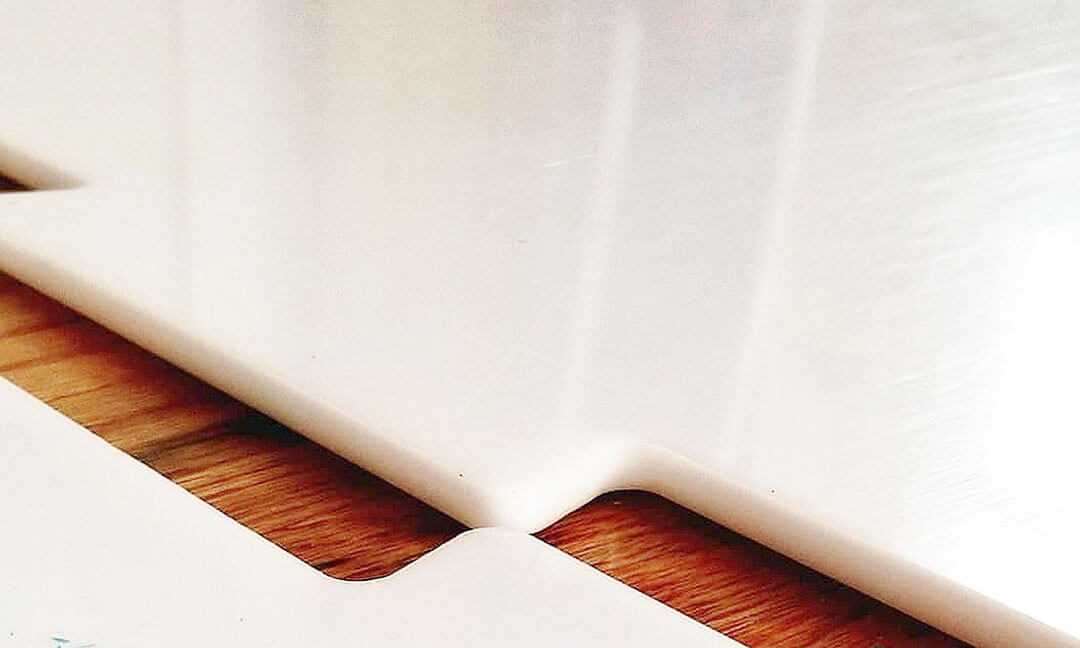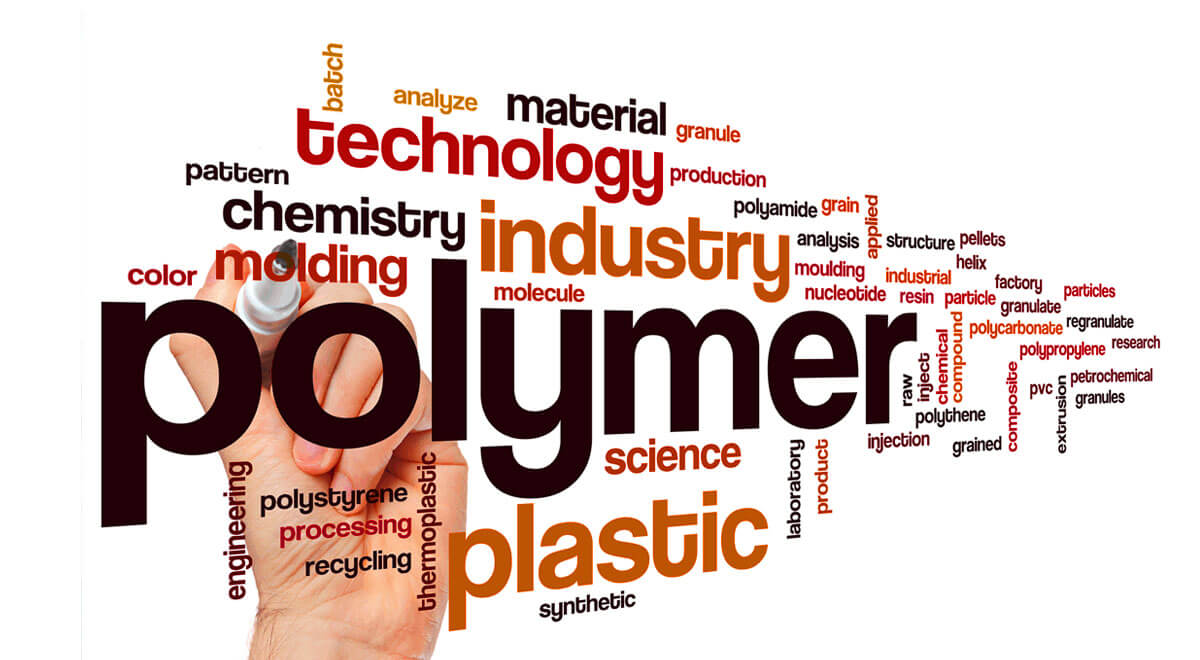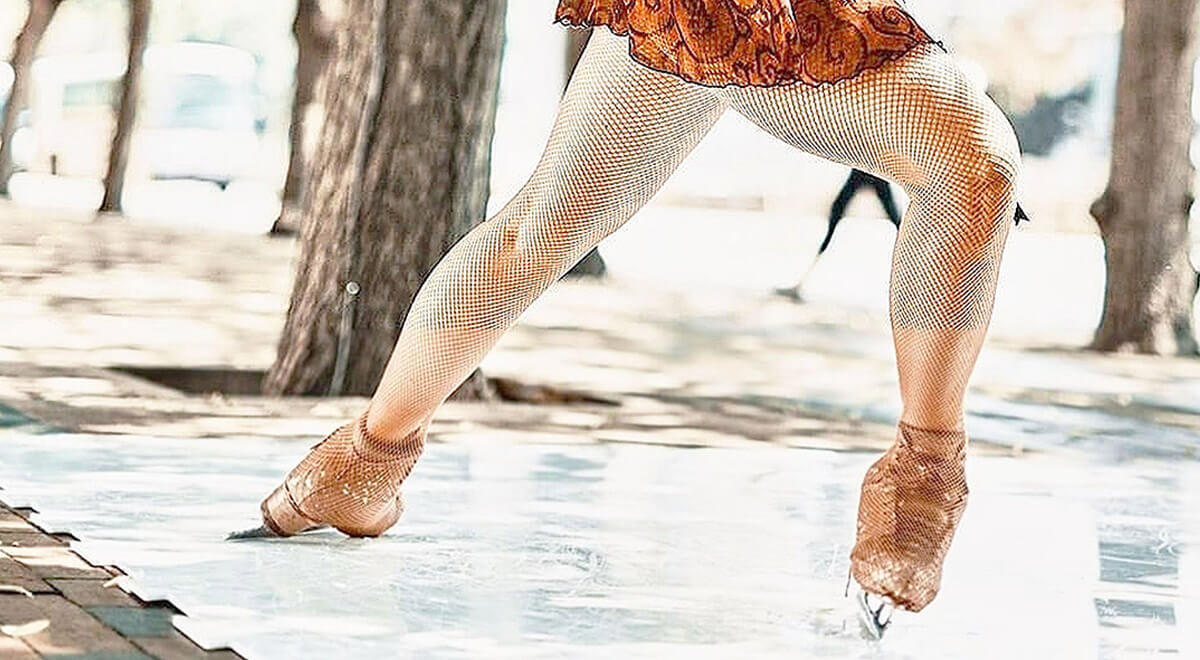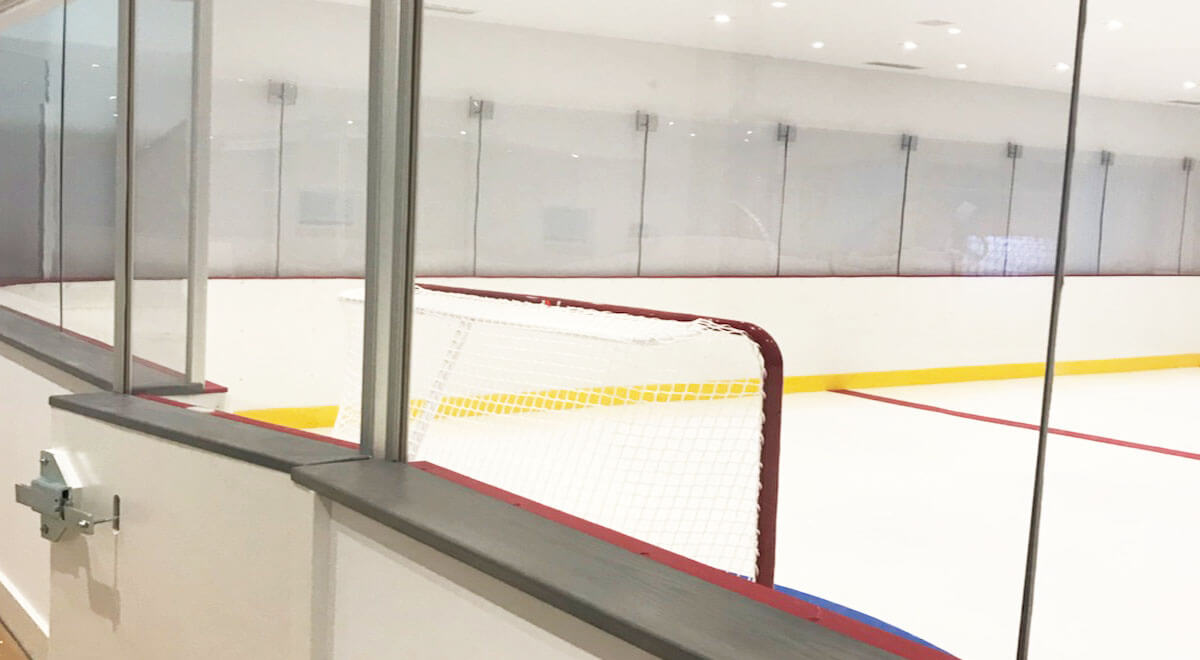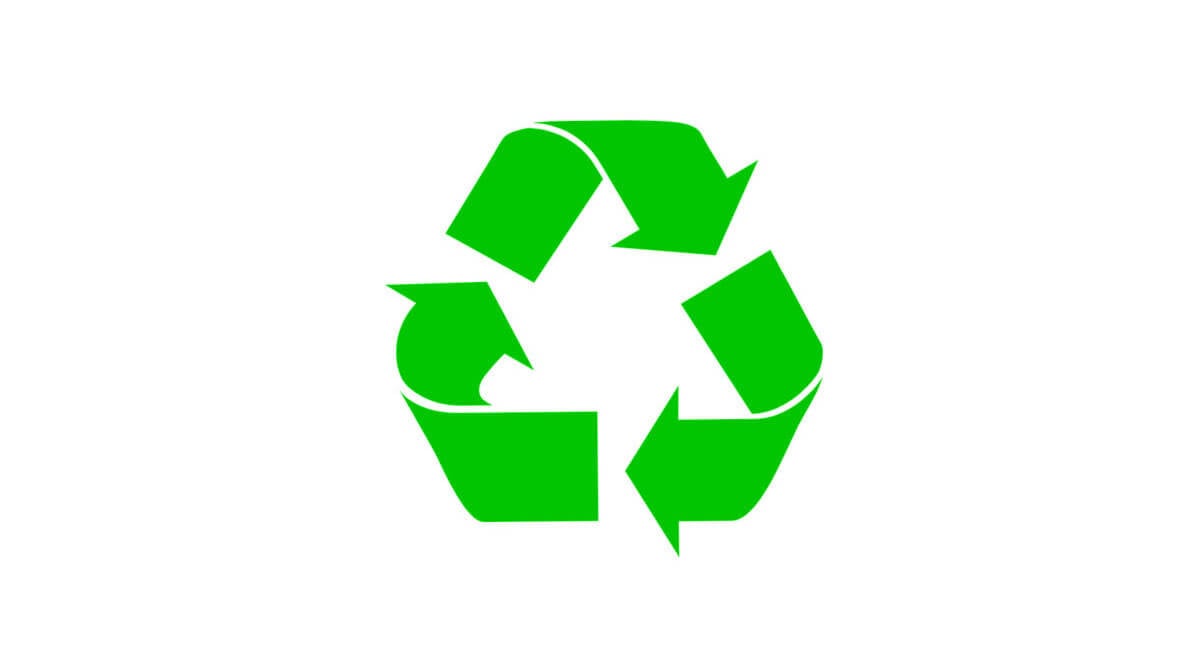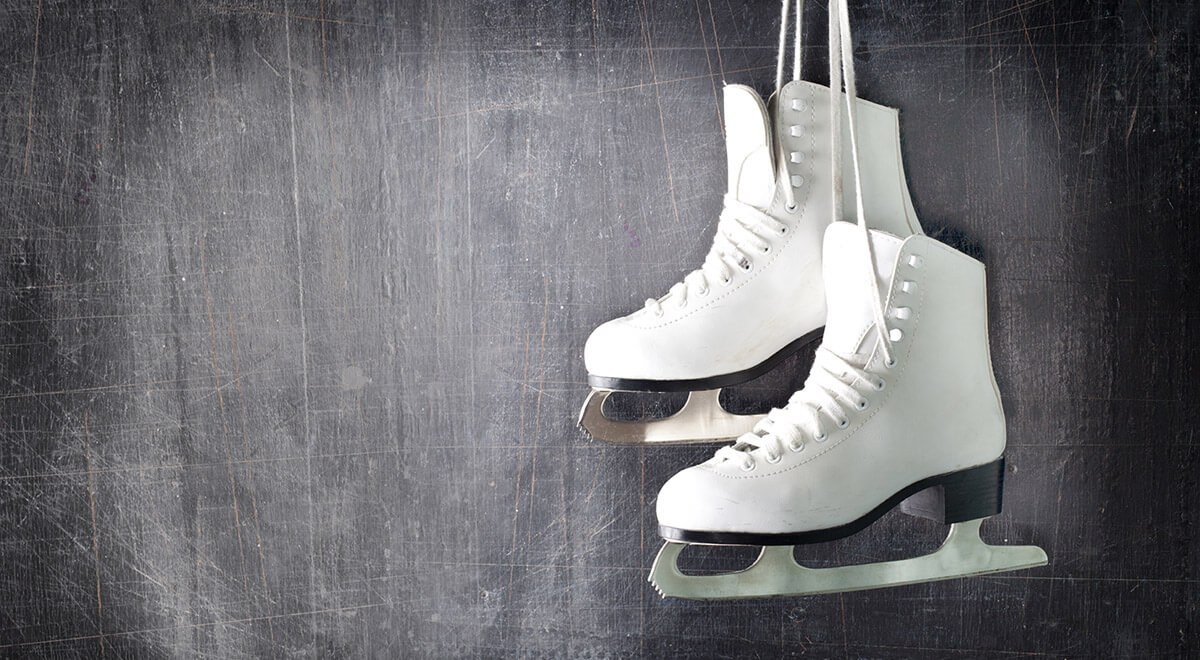The Best Exercises For Synthetic Ice Training
A recent binge-watch had us thinking about the best exercises for synthetic ice training.
Since our company is directly tied to sports, we're a sucker for a good sports documentary.
In an episode of Netflix's latest docuseries, Bad Sport, Canadian figure skaters Jamie Salé and David
Pelletier found themselves in the middle of controversy when a French judge deliberately reduced their scores, giving them silver instead of the much-deserved gold.
While the story was all about the firestorm that ensued, we couldn't help but marvel at the precision, strength and power of their winning routine.
Don't be fooled by Salé's diminutive figure or Pelletier's long, lean frame.
Some of the best figure skaters and hockey players in the world are also the strongest.
They do not only work on perfecting the technical parts of their craft, but they strengthen their bodies to.
That means putting in countless hours in the off-seasons exercising to build their legs, core, and even fast-twitch muscles.
Have you ever thought about the training part of ice skating?

Exercising With Synthetic Ice
If you're looking to take your figure skating or hockey to the next level, exercise must be on the agenda.
You should work on exercises both on and off the ice to set yourself apart from the competition.
In the past, you'd have to find a rink (or build your own) to strengthen your skating and body.
Now, you can have a rink in your home with synthetic ice tiles or panels.
Synthetic ice is a durable High-Density Polyethylene or Ultra High Molecular Weight Polyethylene material.
This material provides an almost ice-like feel when skating, is versatile in any space, and lasts for years.
You can set it up in your backyard, spare room, driveway, garage and start training immediately.
Why Should You Train On Synthetic Ice?
Is synthetic ice training the same thing as skating on natural ice?
Well, not quite.
You'll feel a bit of resistance when you're skating.
This coefficient of friction is common with synthetic ice tiles or panels.
With advancements in technology, the resistance has been cut significantly.
However, that very "Positive Resistance" can increase your power and improve your speed when it's time to hit the ice to compete.
To be a great skater - figure skating or ice hockey - you need a strong core and lower body.
Over time, you'll develop just that skating on your new rink.
Skating alone can improve your strength and stamina but performing specific exercises to strengthen your body is better.
Here are some helpful exercises to build strength, explosiveness, and stamina at all levels..
On-Ice Exercises For Speed, Balance and Agility
Exercising on the ice is all about improving your speed, your balance, and your movement.
Spend some time warming up on the ice, then try these five powerful exercises.
Over time, you'll see noticeable improvements in your speed, endurance, and agility.
1. Gliding Squats
Squat exercises on the ice are one of the best ways to improve your balance.
The longer you can squat while moving on the ice, the stronger your legs and the harder it is for you to fall over.
Start from one end of your synthetic ice rink or panel.
If you're a hockey player, you can do this with your stick straight in front of you with both hands.
First, skate forward to build momentum, then get into a squat position as low as you can.
Hold the position and let your momentum carry you to the end of your home rink.
Then turn around and repeat the exercise.
2. Pistol Squats
It's time to try a more advanced squat.
The pistol squat challenges you through squatting on one leg.
As a beginner, you can start pistol squats in one spot.
As you go down into the squat, you'll extend one leg straight in front of you, slowly dropping your body on the standing leg.
You can repeat the exercise for 10 reps on each leg.
Next, you can move on to skating pistol squats.
Start from one end and glide into the one-legged squat.
Let your momentum carry you to the end of the rink.
Then, turn around and try with the other leg.
This exercise could be challenging at first, so go as far as possible and work your way to further distances.
3. Shuttles (aka Suicides)
Almost every sport uses shuttle exercises.
You'll see them in basketball, sprinting, football, and much more.
These are also excellent exercises to increase your speed, change of direction, and endurance.
It's a great way to test your fitness on the ice.
Your basic shuttle exercise starts by placing two markers at each end of your synthetic ice training tiles.
The distance will be further depending on the length of your rink.
The exercise is simple.
Skate to one end as quickly as possible, then back to the other marker.
Repeat for 30 seconds or 10 reps.
You can change up the intensity by placing multiple markers in a straight line, in a 3-point stance, and so on.
4. T-Stand Exercise
Doing the t-stand on ice improves your balance, strength, and flexibility.
As the name implies, you'll be making a 'T' with your body.
Like pistol squats, you can do this standing or while skating.
Stand straight on the ice with your feet shoulder-width apart.
Shift your weight to one leg and hinge at the hips, extending one leg as far back as possible and the torso forward and parallel to the ground.
Your body should make a 'T' with your standing leg.
Return to the starting position and switch to the other leg, completing 10 reps on each leg.
You can also try this exercise while gliding!
5. Slalom
The slalom helps skaters improve balance, agility, and reaction time.
This exercise can happen forward, in reverse, or on one leg.
Set up some cones, equally spaced, and start at one end.
Start skating around the cones, gliding while swiveling your hips.
Try the exercise in different directions and speeds.
Repeat between 5-10 times per set.
Off-ice Exercises for Strength, Conditioning and Explosiveness
These on-ice exercises can help, but the fact is that you'll be off the ice more than you'll be on it.
So you'll need a fair share of exercises off the ice in your home or at a gym.
Based on age, you can modify some of these exercises.
However, these five workouts are great for building functional strength, stamina, and explosiveness, a must-have for skating sports.
1. Mountain Climbers
These exercises are a great way to build your core muscles while improving your conditioning.
The core muscles are important for maintaining a strong center of gravity, which is essential in skating.
For instance, in figure skating, a lot of the spins and twists come from strong core muscles.
And for hockey skaters, a strong core allows for a change in direction and to generate power.
To perform mountain climbers:
- Assume a pushup position with the hands in line with the shoulders. You'd want to tighten your core, keep a straight head and a neutral spine.
- Drive one foot up to the mid-chest area and bring it back, quickly switching to the other.
- Pick up a rhythm, as it should feel like you're climbing, with your feet firing off like pistons. You can either aim for a timeframe (like 45 seconds) or count your climbs.
- Perform 3 sets 3 times per week.
2. Box Jumps
Ready to build your legs, core, and explosiveness?
Box jumps test your ability to jump on a ledge (in this case, a box) from a stationary position.
The more explosive you get, the higher your box jumps become.
This exercise helps figure skaters generate power.
Go to your local gym to use their box jump set-up.
You can also find a sturdy ledge or build your own box jump.
To perform the exercise, you're going to face the box and stand a few inches away.
The goal is to safely jump and clear the front of the box to finally stand at the top.
Keep your feet just under your hips and bend slightly to activate your hamstrings.
Then explode into a jump, land with both feet at the top, then stand up straight.
Step down and repeat the exercise.
Your hands are crucial in the exercise.
Swing the arms and then upward into the jump.
Perform the exercise 10 times for 3 sets.
As you move on to higher box jumps, you'll need to squat lower and wind up even more to generate power.
3. Squats/Squat Jumps/Broad Jumps
If you don't have access to a box jump, that does not mean you can't build power and explosiveness from the same movements.
Squats are one of the best compound exercises for skaters.
They work your hips, quadriceps, glutes, hammies, and even your core.
You'll be able to skate for longer and perform more powerful moves with ease.
Start with your squat stance, standing tall with your feet slightly turned outward.
Drive your feet into the floor, bend your knees and rock your hips back.
Keep bending until your thighs are a little past parallel to the floor with your chest out and your core engaged.
Get back to the standing position by driving through your heels.
Repeat the movement at least 10 times in 3 sets.
You can mix up your squats with some squat jumps or broad jumps.
For the squat jumps, jump straight up when you come back to the starting position in one fluid motion.
Broad jumps see how far you can jump forward from a standing position.
Assume the squat position, rock your arms back and jump as far forward as possible, similar to box jumps.
Then, turn around and repeat the exercise, jumping back to the initial spot.
Rinse and repeat.
4. Kettlebell Swings
This is another compound exercise that's efficient and effective in so many ways.
The exercise requires a kettlebell - a large cast-iron ball with a handle at the top.
You can do it with one hand or both hands depending on the size of the tool.
The exercise mixes strength and cardio, targeting your core, arms, and shoulders.
You also improve your balance while working out your lower body.
To perform the kettlebell swing, stand straight, holding the kettlebell with both hands until it hangs in between
your legs. Keep your feet slightly further than shoulder-width apart.
Bend your knees slightly and swing the kettlebell outward, then upward to the ceiling.
Your core and arm muscles will generate the power to swing the bell.
If you can't do so, you need a lighter kettlebell.
Once the bell is at the top, bring it back to the starting position in a fluid motion.
Repeat the swing 10-15 times for three sets.
Change the size, the number of hands, and types of swings for more intensity and variety.
5. Deadlifts
Do you see a trend here?
Compound exercises are the best for skating since you use your entire body for almost all disciplines.
Along with swings and squats, deadlifts target multiple muscle groups in one motion.
The concept of deadlifts is simple.
Pick up something heavy and put it back down.
In this case, it could be dumbells, a kettlebell, or a barbell.
Deadlifts target your entire lower body, particularly your hamstrings, glutes, lower back, and core.
Pick up your weights and start standing straight with your legs shoulder-width apart.
Hold the weight right in front of you with your palms facing inward.
Bend your knees slightly and slide the weight down your legs while pushing your hips back.
Keep your back straight, your core tight, and stop near the middle of your shins.
On the way up, squeeze your core and your glutes.
Perform 10-12 reps for 3 sets.
A Special Exercise for all Levels

Whether you have a child who is an up-and-coming pee-wee, bantam hockey player, or a novice figure skater, they all have something in common.
It takes mental strength to compete at any level.
Hockey players compete against opponents who want to get in their heads.
Figure skaters have hundreds of eyes on them and the added pressure of landing that Toe Loop.
If you can train your ability to be calm, live in the moment, and be resilient, you'll be a much better skater and athlete.
The earlier you start to work on it, the better.
A lack of mental strength leads to shattered confidence, more irritability (when losing), and decreased performance.
Meditation and positive thinking are two of the best exercises you can do for your mind.
Meditation trains the mind and body to be present and to remain focused for prolonged periods.
Taking just a few minutes a day to sit, eyes closed, practicing mindfulness improves your critical thinking skills and resilience.
If you or your loved one have problems sitting still, guided meditation apps like Headspace, Shine, and Calm are great options.
Positive thinking helps you be happy and present, regardless of the outcome.
Negative thoughts can creep in even before hitting the ice.
When you think about a successful outcome, you build more desire and drive to get it done.
This simple exercise can bring out the best in your budding skater.
Conclusion
These are some of the best exercises that can be implemented into your synthetic ice training program.
You'll see a big boost in your balance, flexibility, and reaction time when performed consistently.
Figure skaters should also work on explosiveness and hockey skaters on their power.
Synthetic ice allows skaters to perform ice-specific exercises at their convenience, giving them an advantage when it's time to complete.
In addition, the minor resistance compared to the natural ice increases strength and speed.
If you're ready to step up your training hours, consider installing a synthetic ice rink at home to maximize your exercises for ice skating today.



